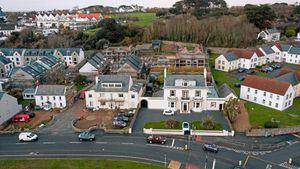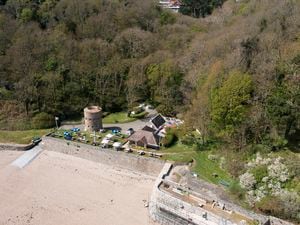Housing estate plans seeking to omit solar panels
Plans to install solar panels on a new housing estate could be scrapped over the cost and the argument that it would be better to just use the local grid instead.

Permission was granted in 2021 for 17 houses behind La Bas Courtils and Fleur de Lys – two houses on Les Bas Courtils Road.
Work has progressed well on the site.
Within the original application it was stated that the plans demonstrated sustainable development principles, with high levels of insulation, the provision of solar thermal panels, cabling for electric vehicle charging points, and permeable hard surfacing.
Planning permission was granted on the condition that those sustainable development features were incorporated.
But developer Swallow Construction is now trying avoid installing solar panels.
In the latest application, Jamie Le Tissier of architects Tyrrell Dowinton Associates said his client now wanted to omit the panels.
‘The relative cost of installing photovoltaic panels in with the necessary infrastructure is extremely high, with a lengthy payback period,’ he said.
‘We have seen increased costs in the last two years, which no longer make this an efficient addition to the development.’
It has been widely-publicised that the cost of building materials has risen following Covid, and this has also affected this project.
Mr Le Tissier said the developers needed to keep the end value of the property in mind.
‘The cost of the installation would potentially push the sale price to a point that many would not be able to afford the properties, and this does not fit with the client’s business model.’
He also argued that the buildings would have high levels of air tightness and insulation, so these would be high performance structures and solar panels were not needed.
‘The building will still be powered via electricity, whereby this is the cleanest form of energy available.’
About 5% of Guernsey’s greenhouse gas emissions come from power generation, according to the States.
The majority of the island's electrical power is imported from France, where nuclear is the prevalent form of generation. However when there is a cable fault or demand exceeds supply, the local power station – which is powered by diesel generators – is needed.
Mr Le Tissier also raised concerns about the build of solar panels.
‘Careful consideration has been given to the manufacturing processes involved in PV development and the removal of natural minerals for their production,’ he said in the application.
Metals such as cadmium, gallium, germanium, indium, selenium, and tellurium are used in photovoltaic cell technology.
The mining of these metals is not environmentally friendly and is expensive.





